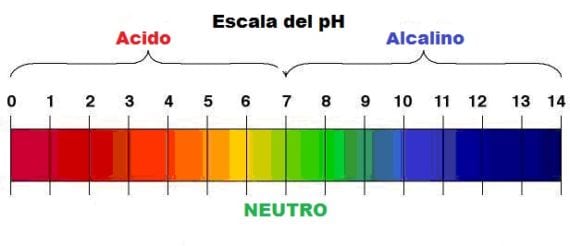
It often happens that some plants turn yellowish leaves, the general condition declines, and we do not know the reason. It is important to know the pH of both water as the substrate we use, since one of the reasons why a plant begins to regress for no apparent reason is precisely the use of inappropriate irrigation water, or a substrate that is not appropriate for it.
There are several meters on the market, in different ways, depending on what we use them for; that is, we have water pH meters and substrate pH meters.
In the following image you can see the pH Scale. It is universal, although it is true that the meters are much more precise, putting the number and some decimal (for example: you can dial 7'8).

Some plants that require an acidic pH are the following:
- Acer palmatum
- Camelia
- brezo
- Rhododendron
- Fuchsia
- Hydrangea
- Gardenia
- liquidambar
There are some plants, like the Chaenomeles japonica (Japanese quince) that, although they prefer an acidic pH, can adapt to an alkaline one.
And some of those that require an alkaline or neutral pH are:
- Ceratonia siliqua
- Prunus
- Rhamnus
- Quercus ilex
- Palm trees in general
- Dracenes
- yuccas
And if I don't have the irrigation water or the right substrate, what can I do?
To lower the pH of the water you can do several things:
- Add a few drops of lemon or vinegar to two liters of water.
- Boil it and let it rest overnight.
To upload it:
- It will be enough to add a little baking soda, With precaution.
To lower the pH of the substratum you can mix it with acid peat. But it is important to emphasize that It will be useless to have mixed it if we do not use irrigation water with a low pH (acid).
To raise it, it is mixed with ground limestone.
We will know if a plant can have problems with the pH when we see yellowish leaves, with very marked nerves, or that we see it grow more slowly than normal, without strength.
More information - Most common pests and diseases of plants
Image – Central23, BonsaiSur